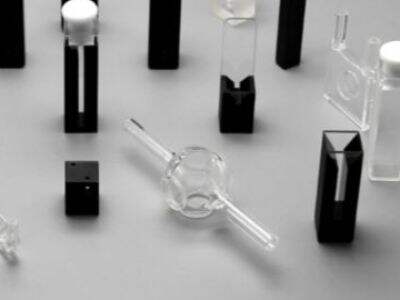For experiments involving light and liquids, optical cuvettes are indispensable. But what is an optical cuvette, and how do you select the ones you need? Below are a few important things to consider when choosing an optical cuvette from Jinke Optical.
Choosing the Right Material for Your Cuvette
Considerations For Your Optical Cuvette SelectionLiquid type — When choosing your optical cuvette, it is important to think about what kind of liquid you will be using. Different liquids can interact with different materials in different ways. One such example is if you require a strong acid or base you must use a Quartz cuvette as most glasses would not withstand it. On the contrary, if you are dealing with a liquid which can dissolve plastic, a glass or Quartz Cuvettes should be chosen instead of plastic. This is important because selecting the material that your cuvette is made of can improve the accuracy of your results and ensure that your cuvette lasts as long as possible to provide the best opportunity for successful experiments.
How To Choose The Optimum Path Length For Your Cuvette
Next, I want to discuss path length. The path length is the thickness of the liquid that the light must travel through in the cuvette. For a concentrated solution, which has more particles in it, you may need a lower path length. That’s because the light doesn’t need to traverse as much of the liquid to obtain the information you seek. Well, if you have a more dilute solution, one with a lower number of particles, you will need a longer path length. Cuvettes are available in multiple path lengths, which allows you to choose the best cuvette for your experiment. You always want to remember that the right path length is important because this way, you can ensure both the reliability and correctness of your data.
Why Good Results Start with Cuvette Clarity
And a very important factor is the transparency of your cuvette. When conducting your scientific experiments, the clarity and transparency of your cuvette are crucial in order to achieve optimal and accurate results. The cuvette should not be too cloudy, dirty, or damaged, because this will alter and skew your results inaccurately. You have to ensure that your cuvette is as transparent and transparent as possible. Light passing through a clear cuvette can provide you with the most accurate data possible. You also have to watch what your cuvette is made from; the material can affect how well it transmits the light. Thus, it is vital to select a material that is rigid yet transparent, so you can see what is happening in your experiment.
 EN
EN
 AR
AR
 BG
BG
 HR
HR
 CS
CS
 DA
DA
 NL
NL
 FI
FI
 FR
FR
 DE
DE
 EL
EL
 HI
HI
 IT
IT
 JA
JA
 KO
KO
 NO
NO
 PL
PL
 PT
PT
 RO
RO
 RU
RU
 ES
ES
 SV
SV
 TL
TL
 ID
ID
 LV
LV
 SR
SR
 SK
SK
 UK
UK
 VI
VI
 HU
HU
 MT
MT
 TH
TH
 TR
TR
 FA
FA
 AF
AF
 MS
MS
 GA
GA
 IS
IS
 LA
LA
 KK
KK







